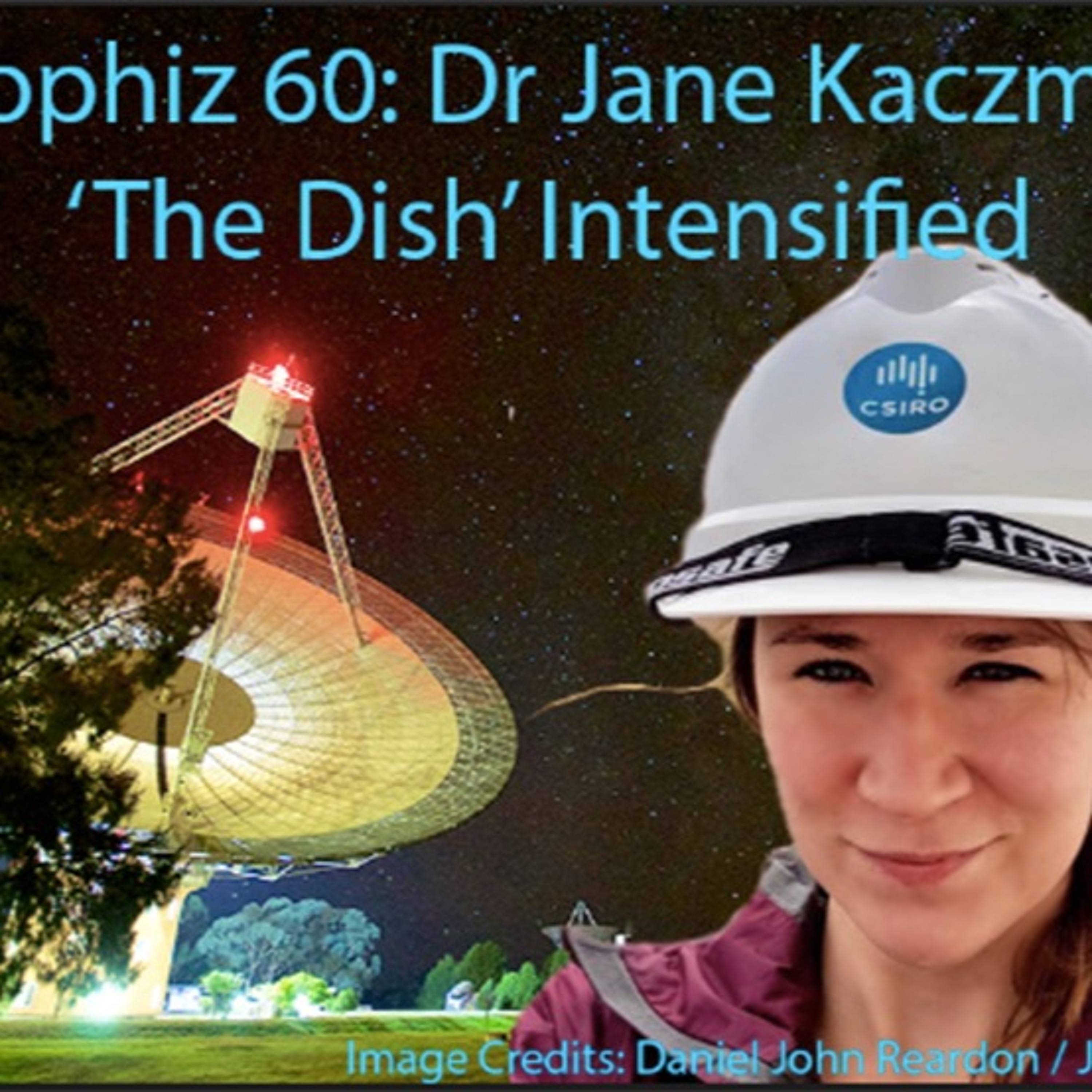Astrophiz60-Dr Jane Kaczmarek

b"Astrophiz 60: Dr Jane Kaczmarek ~ 'The Dish\\u2019 Intensified ~ on Soundcloud & iTunes\\nA full-length feature episode on the installation of revolutionary receivers on the famous CSIRO Parkes Radio Observatory \\u2018The Dish\\u2019, featuring Dr Jane Kaczmarek who led the commissioning of the Ultra Wideband with Low receiver, the UWL.\\n\\nDr Jane is a CSIRO research scientist and post-doctoral fellow who has her BSc in Physics and Astrophysics from the University of Wisconsin and her Doctorate in Physics from The University of Sydney.\\n\\nThen Dr Ian \\u201cAstroblog\\u2019 Musgrave presents his regular segment \\u2018What\\u2019s Up Doc? where he tells us what's up in the evening, night and morning skies for the next two weeks, and in his bizarre tangent he explains how gravity waves interfering with the rings of Saturn can tell us how fast it rotates and many of Saturn\\u2019s internal properties.\\nDr Ian is a University pharmacology and toxicology lecturer, amateur astronomer and astrophotographer.\\n\\nFollow @jfkaczmarek, PULSE@Parkes and @ianfmusgrave on Twitter. \\nThen just put Astroblogger and Southern Skywatch into your search engine. \\u2028Ian\\u2019s blogs come up #1 in searches.\\nFollow @Astrophiz on Twitter, FB & Insta\\nSubscribe to our fabulous podcast on iTunes or Soundcloud or via your fav podcatcher\\n\\n\\nIn the news:\\n\\n1. Here\\u2019s our latest SKA UPDATE adapted from a story in Science By Daniel Clery on Jun. 19, 2018\\u2028Today, the Square Kilometre Array (SKA), a continent-spanning radio astronomy project, announced that Spain has come on board as the collaboration\\u2019s 11th member. \\nThat boost will help the sometimes-troubled project as, over the next year or so, it forms an international treaty organization and negotiates funding to start construction. \\nIn Australia, in an extreme radio \\u2018quite zone\\u2019 where the MWA SKA-precursor has already produced some amazing science using revolutionary \\u2018spider\\u2019 antennae arrays, Phase 1 of SKA will add about 130,000 antennas in Australia. \\u2028\\nPhase one of the SKA in Africa will add more than 130 dishes to South Africa\\u2019s 64-dish MeerKAT precursor telescope, on the wide-open plains of the Karoo desert.\\u2028The last of 64 13.5-meter dishes was installed late last year, and next month South African President Cyril Ramaphosa will officially open the facility. Spread across 8 kilometers, the dishes have a collecting area similar to that of the great workhorse of astrophysics, the Karl G. Jansky Very Large Array (VLA) near Socorro, New Mexico. But with new hardware designs and a powerful supercomputer to process data, MEEKAT could have an edge on its 40-year-old northern cousin.\\u2028\\n\\nSo while this partnership announcement with Spain is new, though to be fair, Spain has been collaborating and contributing to SKA through their industry, institutions and scientific teams for many years already. Welcome abourd Spain. \\xa1Bienvenido a bordo de Espa\\xf1a!\\u2028 \\u2028\\n\\n2. And here\\u2019s an update on the latest FRB or Fast Radio Burst News from an accepted paper by Vikram Ravi in the Monthly Notices of the Royal Astronomical Society also on the 19th of June.\\u2028Here\\u2019s an abstract of his abstract:\\u2028He presents an empirical study of the properties of fast radio bursts (FRBs) and focussed his investigation on a sample of seventeen FRBs detected at the Parkes radio telescope, and concludes that it is uncertain at present whether they share a common class of progenitor object, or arise from a selection of independent progenitors. \\u2028\\n\\n3. And to add to the FRB mystery, check out this recently revised paper in ArXiv by Joao G. Rosa, Thomas W. Kephart who hypothesise that FRBs may be a result of spinning Black Holes creating dark matter lasers. \\u2028Read it for yourself at tinyurl.com/blackholefrb \\u2028The mystery of FRBs lives on. Watch this space."